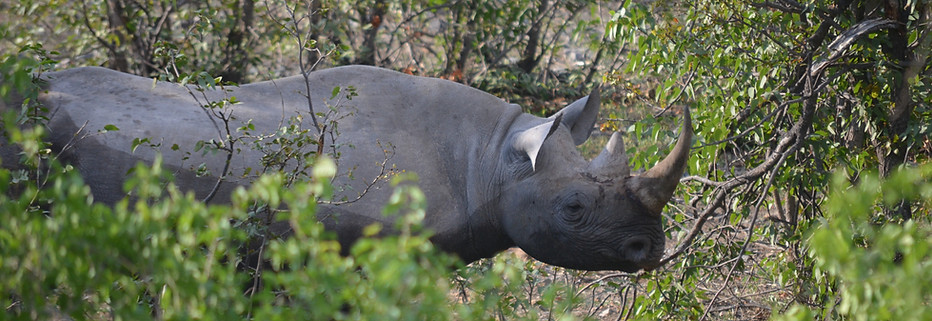
There are 5 different species of Rhino and are all recognisable by their distinctive horns. Some species such as the Greater One-horned Rhino have (you guessed it) 1 horn whilst the Black and White Rhino have 2. Rhinos might look like they are wearing armour but it's actually their 3 cm thick skin. This helps protect them and keep them warm as they have no hair!
DID YOU KNOW?
The Sumatran Rhino is the oldest surviving mammal in the World!
FACT FILE
Type of animal: Mammal
Habitat: Deserts, Forests and Grassland
Maximum Length: Up to 3m
Diet: Vegetation, Grass and Fruits
Status: Near Threatened --> Critically Endangered
SPECIES
Sumatran Rhino
Javan Rhino
Black Rhino
Greater One-Horned Rhino
White Rhino
REGION
Sumatra and Borneo
Java, Indonesia
Central and Southern Africa
India and Nepal
Central and Southern Africa
APPROX. POPULATION
80
69
5,500
3,500
18,500
STATUS
Critically Endangered
Critically Endangered
Critically Endangered
Vulnerable
Near Threatened

HABITAT
There are 5 different species of Rhino in the world and they are found in South Asia, India and Central and Southern Africa. African Rhino's can be found on grassland Savannahs and Deserts whilst the Asian species are more at home in dense, humid Rainforests.
CONSERVATION - HOW TO HELP THE RHINO

All 5 species of Rhino feature on the endangered scale and threats such as poaching are seeing their numbers dramatically decline, such as the Javan Rhino whose population is as low as 69! Illegal hunters are killing Rhinos in order to remove and sell their horns. These can then be sold to countries such as China and Vietnam as medicines, ornaments and a vast range of other impractical uses. To the best scientific knowledge there are no medicinal benefits to Rhino horn.
The populations that are left in the wild face loss of habitat due to human activity such as deforestation and commercial farming. This leaves only tiny areas for them to live and encourages in-breeding which in turn can lead to disease and a weaker species. But with the help of leading conservation groups more is being done to educate communities and stop illegal poaching. This includes training rangers to be able to track Rhinos and poachers and better equip them with the skills and technology they need.
The re-establishing of populations is also a major part of bringing Rhino populations up. Rhinos are now being introduced into areas in Africa where they have previously been extinct. This should allow for more successful and wider breeding leader to happier, healthier Rhinos







